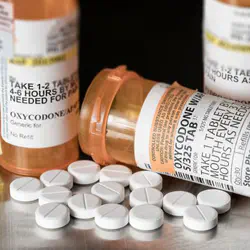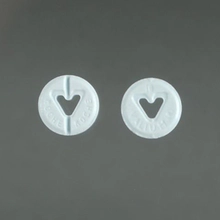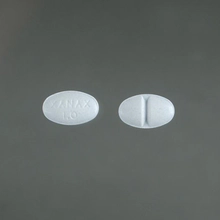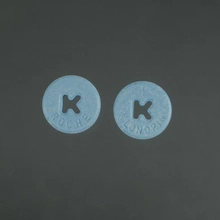DRUGS: WHAT YOU
NEED TO KNOW Booklet

Signs and Symptoms of Prescription Drug Addiction

Millions of people are using prescription drugs improperly. The National Institute on Drug Abuse estimates that more than 16 million people misused a prescription drug in 2020.1 The most common drugs that were being misused were opioid painkillers, prescription stimulants, sedatives, tranquilizers, benzodiazepines and sleep aids.
All of these drugs are addictive if they are taken for too long, taken in too-high dosages or taken without a doctor’s guidance. Most of them can cause fatal overdoses if too much is consumed or if they are combined with other drugs that contribute to a life-ending effect. Taking someone else’s medication or abusing any prescription drug to get high can lead to illness, addiction or death.
Opioid Painkillers

There is a long list of opioid painkillers that range from mild to extremely strong. Very strong opioids are mostly used in medical facilities as part of surgical procedures or to relieve cancer or end-of-life pain. As most Americans now know, it is not difficult to fatally overdose on opioid painkillers. Combining them with alcohol or another drug like a benzodiazepine makes a fatal overdose more likely because all these drugs depress the respiratory function, meaning that a person could stop breathing as a result.
Here are some of the opioid painkillers currently in use, with the generic name first, followed by one or more brand names.
- oxycodone (brand names OxyContin, Endocet, Percocet, and Roxicet)
- hydrocodone (Vicodin or Lortab)
- morphine (MS Contin)
- codeine (Tylenol with Codeine)
- propoxyphene (Darvon)
- hydromorphone (Dilaudid)
- meperidine (Demerol)
In addition to these opioid painkillers being available by prescription, these pills are readily available on the illicit market. Unfortunately, when these pills are obtained on the illicit market, some will be counterfeit and could contain fatal overdoses of the powerful synthetic opioid fentanyl. It only takes two tiny milligrams of fentanyl to create a fatal overdose.
A person misusing opioids will manifest drowsiness, lethargy, confusion, nausea, vomiting, itching and constipation.
Prescription Stimulants
Stimulants have been used to help people lose weight or to keep them awake if they tend to suddenly fall asleep during the day.2 They have controversial use in stimulating students to be more attentive to their studies.
Today’s popularly-prescribed stimulants:3
- dextroamphetamine (Dexedrine)
- dextroamphetamine/amphetamine combination product (Adderall)
- methylphenidate (Ritalin, Concerta)
It is possible to overdose on these drugs, and their stimulating effects can be hard on a person’s heart when they are abused. The resulting irregular heartbeat can contribute to a prescription drug abuser suffering a heart attack.
More than four million people misuse a prescription stimulant each year, and more than three-quarters of a million people struggle with an addiction to these drugs.4
Typical effects to watch for include increased heart rate, faster breathing, euphoria, loss of appetite and lack of usual fatigue.
Benzodiazepines
Benzodiazepines are primarily used as anti-anxiety drugs and are prescribed for panic attacks and other stress-related conditions. They may also be prescribed for sleep problems because they tend to make a person sleepy.
These drugs are highly addictive and can have severe and even life-threatening withdrawal symptoms, even when used as prescribed.


Courtesy of DEA.gov

The types of benzodiazepines most popular among those who abuse prescription drugs are:
- diazepam (Valium)
- alprazolam (Xanax)
- clonazepam (Klonopin)
Very often, illicit or prescription drug abusers combine the use of opioids like heroin or oxycodone with a benzodiazepine because they are seeking the heightened effect of this combination. Some people add a third drug, a muscle relaxer like Soma (carisoprodol). Doctors catering to drug users know this and are compliant with patient wishes to prescribe all three drugs at once.
A person abusing benzodiazepines may show these signs:
- Slowed breathing
- Drowsiness
- Confusion
- Headache
- Fainting
- Nausea
- Tremor
Sleep Aids
While benzodiazepines may be prescribed for sleep problems, there are a few prescription drugs that are specific for insomnia. The most popular of these drugs are:
- zolpidem (Ambien)
- eszopiclone (Lunesta)
- zaleplon (Sonata)
These three drugs are often referred to as “Z drugs” because there is a Z in each name.
Using any of these drugs too consistently and for too long can have the effect of causing addiction which means that the user or abuser must go through withdrawal symptoms to break free of these drugs.
Sedatives
Barbiturates were long used as sedatives and sleep aids, but it was relatively easy to overdose on these drugs. They have mostly been replaced in medical use with benzodiazepines and sleep aids. Barbiturates are still being prescribed to some patients and are still being misused, sometimes with fatal results.
These drugs slow down the function of the central nervous system (CNS). If the CNS slows down too much, the drug user will never wake up:
- amobarbital (Amytal)
- pentobarbital (Nembutal)
- secobarbital (Seconal)
- phenobarbital (Luminal)
The Substance Abuse and Mental Health Services Administration estimates that 6.2 million people abused a sedative or tranquilizer in the last year.5 The age group most likely to misuse these drugs was those aged 18 to 25.
The effects to look for include euphoria, sleepiness, poor memory, lack of coordination and irritability. Higher doses can result in paranoia and thoughts of suicide.
The Sedative Effects of Benzodiazepines, Sleep Aids and Barbiturates

All of these drugs have a sedative effect because each one slows the function of the brain.6 But if the dose is too high or a person takes a combination of these drugs, a fatal overdose is possible.
As the brain slows down, a person becomes calmer, but breathing and heart rate also slow down. A person’s judgment, coordination and memory become faulty, which can lead to accidents or injuries. If a person adds alcohol to the mix, the danger of injury or death increases.
Because of their effects on memory and ability to exert one’s own will, a few of these drugs are used for the purpose of date rape. The person who suffers the assault may not even remember that it happened.
Deaths from Prescription Drugs
While prescription drugs are supposed to help people recover from illness or survive health crises, they often cause death when they are used incorrectly. Every year, tens of thousands of people die from the effects of a single prescription drug or from the combined effects of multiple drugs.
According to the National Institute on Drug Abuse, more than 16,000 people died in 2020 from an overdose that involved prescription opioids. More than 12,000 died in a benzodiazepine-involved overdose death. One in six opioid deaths also involved a benzodiazepine, attesting to how common it is to combine these drugs.7
These deaths are entirely preventable, which makes them all the more tragic. By working with conscientious doctors and preventing one’s prescription from falling into the wrong hands, a person using a prescription drug can prevent harm to themselves and others.
Sources:
-
National Institute on Drug Abuse. “What is the scope of prescription drug misuse in the United States?” NIDA, 2020. NIDA Article ↩︎
-
National Institute on Drug Abuse. “Prescription Stimulant Medications (Amphetamines).” NIDA. NIDA Article ↩︎
-
National Institute on Drug Abuse. “Prescription Stimulants DrugFacts.” NIDA, 2018. NIDA Article ↩︎
-
SAMHSA. “NSDUH (National Survey on Drug Use and Health) Detailed Tables” SAMSHA, 2021. SAMHSA Publication ↩︎
-
SAMHSA. “Key Substance Use and Mental Health Indicators in the United States.” SAMHSA, 2021. SAMHSA Report (PDF) ↩︎
-
National Institutes of Health. “Facing Addiction in America: The Surgeon General’s Report on Alcohol, Drugs, and Health.” NIH, 2016. NIH Article ↩︎
-
National Institute on Drug Abuse. “Benzodiazepines and Opioids.” NIDA, 2021. NIDA Article ↩︎


 ®
®
